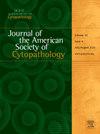American Society of Cytopathology’s cytopathology workforce survey in the United States
Q2 Medicine
Journal of the American Society of Cytopathology
Pub Date : 2025-03-01
DOI:10.1016/j.jasc.2024.12.003
引用次数: 0
Abstract
Introduction
To assess the current state of the cytopathology workforce shortage in the United States.
Materials and methods
A survey comprising 32 questions was developed by the Government Affairs and Economic Policy Committee of the American Society of Cytopathology using Survey Monkey software. It was distributed to the American Society of Cytopathology membership through email, and the anonymous responses were compiled into an Excel spreadsheet.
Results
We received a total of 200 responses nationwide. Of these, 86.7% of respondents experienced a cytopathology/laboratory workforce shortage with 35.8% facing this issue for more two years. The most significant reported shortages were cytologists (72.1%) followed by histotechnologist (52.9%) and cytopreparatory personnel (47.1%). The impact of these shortages included stress (70.4%), patient care compromise, and job changes. The primary cause cited was noncompetitive salaries along with a decline in cytologist training programs. Other factors included job security concerns, increased workload, negative work culture, lack of flexibility, lack of appreciation, limited career growth opportunities, government policies, geographic location, retirements, and the COVID-19 pandemic. The most common reported mitigation strategies include redistributing work amongst the existing staff, outsourcing excess workload to a reference laboratory, and offering overtime. Additional measures included employing travel cytologists, cross-training technical staff from other areas of the laboratory, and assigning pathologists to perform technical tasks.
Conclusions
This study enhances the understanding of the cytopathology workforce shortage in the United States, including perceived reasons of the shortage. The results offer valuable insights and a foundation for future surveys or intervention studies aimed at addressing this issue.
美国细胞病理学协会的美国细胞病理学工作人员调查。
简介:评估美国细胞病理学人员短缺的现状。材料和方法:美国细胞病理学学会政府事务和经济政策委员会使用survey Monkey软件开发了一项包含32个问题的调查。它通过电子邮件分发给美国细胞病理学学会的会员,匿名回复被汇编成一个Excel电子表格。结果:我们在全国共收到200份回复。其中,86.7%的受访者表示细胞病理学/实验室人手短缺,35.8%的受访者面临这个问题超过两年。报告中最严重的短缺是细胞学家(72.1%),其次是组织技术专家(52.9%)和细胞修复人员(47.7%)。%)。这些短缺的影响包括压力(70.4%)、病人护理妥协和工作变化。主要原因是缺乏竞争力的薪水以及细胞学家培训项目的减少。其他因素包括对工作安全的担忧、工作量增加、消极的工作文化、缺乏灵活性、缺乏赞赏、有限的职业发展机会、政府政策、地理位置、退休和COVID-19大流行。最常见的缓解策略包括在现有员工之间重新分配工作,将多余的工作量外包给参考实验室,以及提供加班。其他措施包括雇用旅行细胞学家,对实验室其他领域的技术人员进行交叉培训,并指派病理学家执行技术任务。结论:本研究增强了对美国细胞病理学劳动力短缺的理解,包括短缺的感知原因。结果提供了有价值的见解和基础,为未来的调查或干预研究旨在解决这一问题。
本文章由计算机程序翻译,如有差异,请以英文原文为准。
求助全文
约1分钟内获得全文
求助全文
来源期刊

Journal of the American Society of Cytopathology
Medicine-Pathology and Forensic Medicine
CiteScore
4.30
自引率
0.00%
发文量
226
审稿时长
40 days
 求助内容:
求助内容: 应助结果提醒方式:
应助结果提醒方式:


